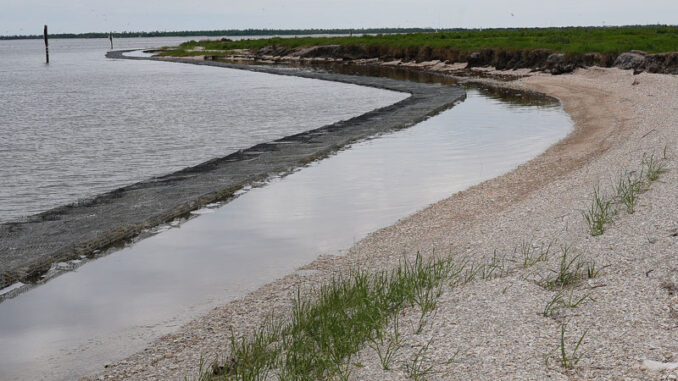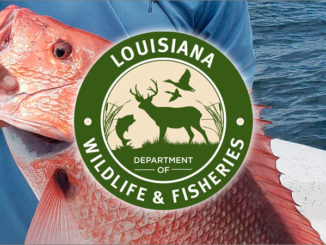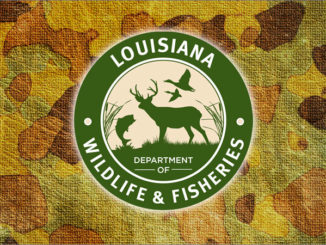
Louisiana Department of Wildlife and Fisheries (LDWF) Restoration Program staff are encouraged by the initial performance of a shoreline protection feature that was completed at Rabbit Island in December.
Located within Calcasieu Lake in Cameron Parish, just south of Hackberry, Rabbit Island is home to the state’s only historic brown pelican colony in Southwest Louisiana, and one of only 10 remaining colonies for the species. LDWF Restoration Program Manager Jon Wiebe, along with Biologist Kacie Rome, visited the island last month to inspect the operation and effectiveness of the protection feature in tandem with documenting ongoing colonial waterbird nesting performance.
“Rabbit Island served as a valuable resource for natural resource trustees as it provided a safe location to release rehabilitated birds in relation to the Deepwater Horizon oil spill. However, the island had been experiencing long-standing issues in relation to sea level rise and erosion which were further magnified by marine traffic within the adjacent Calcasieu Ship Channel,” Wiebe explained. “Collectively, these factors had resulted in an over 50 percent annual loss due to nest inundation. Given preferential nesting habitat is considered a principal limiting factor in the restoration, conservation and management of brown pelican and other colonial waterbirds impacted by the spill, Trustees prioritized the island’s restoration, which was completed in 2020. “
Wiebe added that following island completion, Trustees began to document many of the same factors that degraded Rabbit Island again causing marketable damage. Significant erosion was documented along sections of the island’s earthen containment; a structure designed to facilitate restoration activities as well as support protection against colonial waterbird nest inundation. “Clearly something needed to be done and, the Trustees partnered with the restoration community to identify and implement a timely and effective solution,” Wiebe said. “Ultimately, it was determined that the most effective means was the installation of a shoreline protection feature; a proven concept that had been recently installed along several miles of adjacent shoreline within Calcasieu Lake’s West Cove by The Nature Conservancy.”
The shoreline protection system put in place along the northeastern edge of the island consists of 810 large wire-mesh gabion baskets filled with limestone rock. “The rocks attenuate the wave action, leaving smooth water along the shore,” Wiebe said. “Over time, we expect silt to build on the island side of the structure and vegetation to get established. In addition to reducing erosion and increasing vegetation, oysters can attach to the baskets, creating an artificial oyster reef.”
The shoreline protection system was constructed by the Louisiana Trustees, an agency formed to assist with oil spill recovery efforts along the coast of the Gulf of Mexico, with additional support provided by The Nature Conservancy (TNC) and Cheniere Energy, LLC. TNC provided advice on design of the gabion baskets while Cheniere Energy provided $120,000 for the materials to build the gabion baskets; a donation that was facilitated by the Louisiana Wildlife and Fisheries Foundation.
In addition to the benefits for the nesting waterbirds on the island, officials expect this project to generate direct benefits for the state’s Tier 1 public oyster reef located around the island. Tier 1 oyster areas are ecologically sensitive, publicly owned, highly productive and have little or no oil and gas activity.
The restoration project began in 2020. At that time, the island had lost 89 acres of landmass, or 35 percent of its area, with the majority of the island’s 200-acres being exposed to open water. Sediment from the Calcasieu Ship Channel was used to restore the elevation of the island, restoring 102 acres of nesting bird habitat. In addition, more than 65,000 plants were installed, including smooth cordgrass, matrimony vine, groundsel bush and marsh elder. Finally, the shoreline protection system was put in place.
Walking around the nesting areas, Wiebe said the increased vegetation was critical to the various bird species that visit the island, including brown and white pelicans, egrets, herons, ibis, terns, gulls and other water birds.
Hundreds of brown pelicans were observed nesting over recently laid eggs. The chicks are expected to hatch later this spring.


